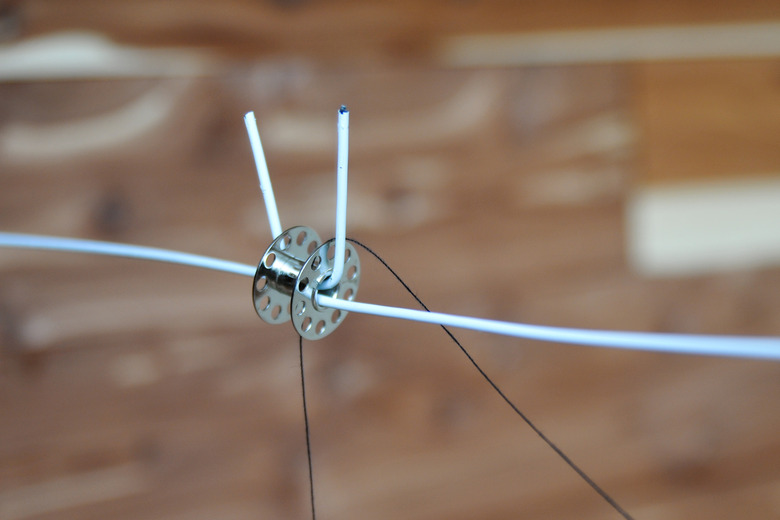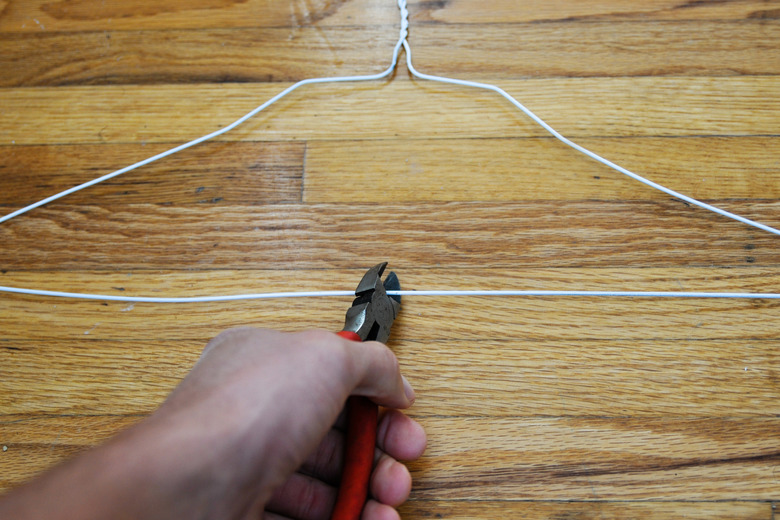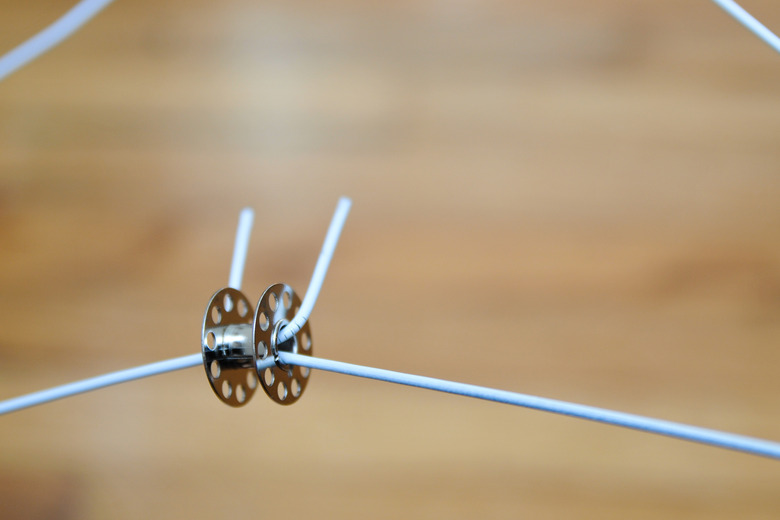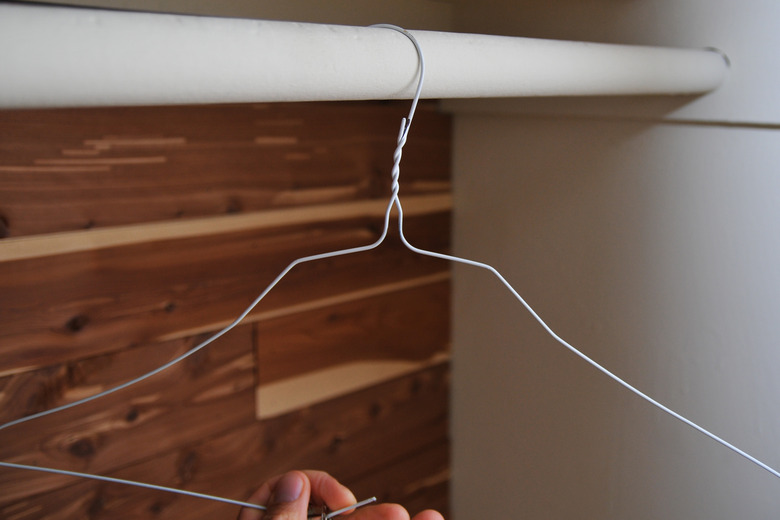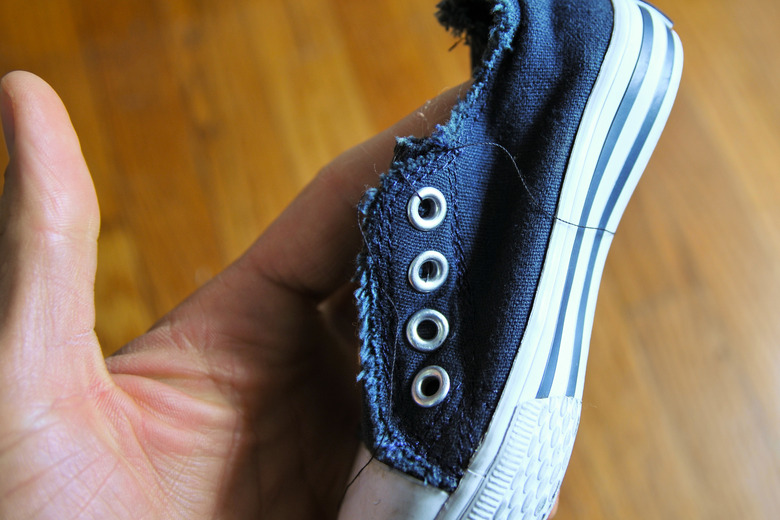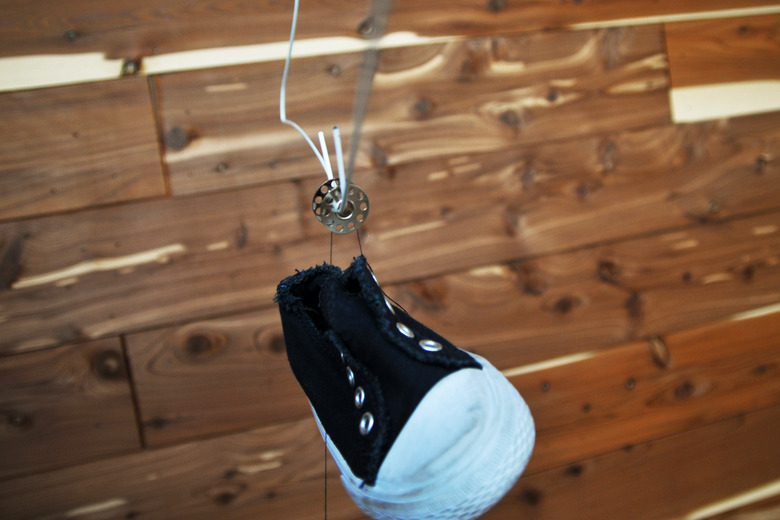How To Make A Pulley For Children
Maybe you're learning about simple machines, or maybe you're just interested in how they work. In either case, a great way to get some hands-on experience with simple machines is to build your own pulley. You can use this pulley as a simple science experiment dealing with forces, or you can just build it to learn how a pulley works.
Step 1
Cut the bottom of a wire hanger directly in the center, using a wire cutter.
Step 2
Slide an empty spool of thread onto one of the severed ends of the wire. Then slide the other severed end into the spool from the opposite direction. When the spool is secure on both sides of the wire hanger, bend the severed ends down so that the spool stays in place.
Step 3
Suspend the hanger from a coatrack, hook or other protrusion from the wall.
Step 4
Tie one end of a piece of string onto the weight, and thread the other end of the string over the spool. The string should be around twice as long as the distance from the hanger to the floor.
Step 5
Pull the loose end of the string to lift the weight. If you are trying to demonstrate the purpose of simple machines, use a spring scale to measure how much force you are using to lift a book using the pulley. (To do this, tie the loose string to one end of the spring scale and pull the other. Check the reading on the side of the spring scale to find out the force you are using.) Then compare it to the force you use to lift the book directly using only the string.
Things Needed
- Wire cutter
- Wire hanger
- Empty spool of thread
- String
- Weight (such as a book or toy)
- Spring scale (optional)
TL;DR (Too Long; Didn't Read)
If you are making the pulley in a classroom, consider using a flagpole as the anchor for your pulley. If no anchor is available, have one person hold the top of the hanger while another person pulls on the end of the string.
Warning
The severed ends of the wire can be sharp, so exercise caution when working with them, as well as with the wire cutter. Younger children should be closely supervised for this activity, and an adult may want to complete Step 1 for them.
References
Cite This Article
MLA
Perles, Carrie. "How To Make A Pulley For Children" sciencing.com, https://www.sciencing.com/make-pulley-children-5896241/. 24 April 2017.
APA
Perles, Carrie. (2017, April 24). How To Make A Pulley For Children. sciencing.com. Retrieved from https://www.sciencing.com/make-pulley-children-5896241/
Chicago
Perles, Carrie. How To Make A Pulley For Children last modified March 24, 2022. https://www.sciencing.com/make-pulley-children-5896241/
